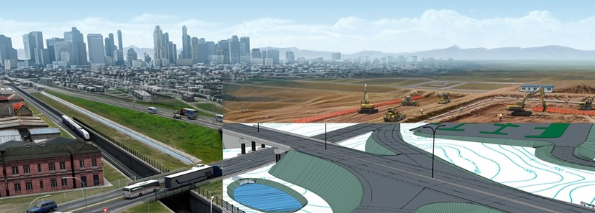This article was written by Richard Humphrey, Senior Director of Construction Products at Bentley Systems as part of the BuiltWorlds Verified Contributor Program.
What is 4D Construction?
As Design Engineers have moved to 3D Building Information Modeling (BIM) as the technology enabled process for design delivery, construction firms have looked for ways to leverage these 3D BIM models for downstream construction workflows. Specifically, the concept of 4D modelling refers to the addition of a time dimension to the 3D CAD model, enabling teams to analyze the sequence of events on a time-line and visualize the completion of construction tasks. This concept can be extended to “nD” where additional dimensions represent other types of information added to the 3D model context. 5D models, for example, refers to the linking of 3D model objects with time and cost information.
The development of a “Construction Model” from the design BIM model to drive 4D/5D workflows results in projects more likely to be on time and profitable.
Engineers, Construction Managers and Contractors have leveraged 4D and 5D construction modeling to drive significant value in workflows that once involved a lot of risk and inefficiencies during the construction phase of a project. Some examples include…
- Model Based scheduling and simulation → A 4D model allows planners and construction staff to visualize the construction sequencing including staging (i.e. cranes, material storage, site access, etc.). This helps identify errors in the plan and optimize the path of construction. It is also a better way of communicating the plan to the rest of the construction team. It is better to build virtually first than to find mistakes in the field.
- Model Based QTO and Estimating → A 5D model in which means, methods, quantity calculations, and cost codes are linked to model objects allow more accurate estimates, enable rapid iteration if designs change and enable cost to be part of the project plan optimization. This ensures that companies can win more and ensure the projects they win are profitable.
- AR/VR and Model-based Field Inspection & Progress Tracking → A georeferenced construction model can be brought into the field using web and mobile apps to provide data access and capture in the field with the 3D model as context. This ensures that field staff for example are collecting data about the correct constructed asset because they use its model object (virtual representation) as a reference for the task they are completing.
The bottom line is that the development of a “Construction Model” from the design BIM model to drive 4D/5D workflows results in projects more likely to be on time and profitable.
The Current Situation within Heavy Civil Projects
So, if 4D/5D construction modeling is this useful why is it not used on every project and why do we see only very little adoption on Civil (Horizontal) construction projects? It is often easier for construction to leverage model-based workflows when they have the design model. This is not always the case and specifically for civil projects this happened less often (than Building or Industrial Plant projects) as infrastructure owners (i.e. DOTs) do not specify 3D models as the design deliverable to contractors. This is changing as countries like the UK drive BIM specification and as Design/Build delivery models gain acceptance.
Also, unlike Building or Plant BIM models, Civil design models are not very usable for 4D/5D. This has been the case since the first 4D software tools became available in the last decade. Building and Plant models are delivered with a high degree of componentization and related engineering information. For example, a building model includes objects such as doors, windows, walls, lights, pipes, etc. that are very discreet and can be directly connected to a construction schedule. Civil models are not componentized in this way so require a secondary processing steps that turn model objects into constructible components.
For example, a 25-mile civil roadway/corridor model is often one long object unless split by a bridge or interchange. This type of model object is not a constructible component since it does not represent how that 25 miles of road surface, aggregate, barrier wall, curbing, etc. will be constructed. As a result, it cannot be directly connected to time or cost. This has been a dilemma for the last decade and has required construction firms to rebuild the models into many model objects within the design authoring tools. This is an obstacle to adoption as it requires a high degree of knowledge of complex design modeling solutions.
This article was written by Richard Humphrey, Senior Director of Construction Products at Bentley Systems as part of the BuiltWorlds Verified Contributor Program.



Discussion
Be the first to leave a comment.
You must be a member of the BuiltWorlds community to join the discussion.